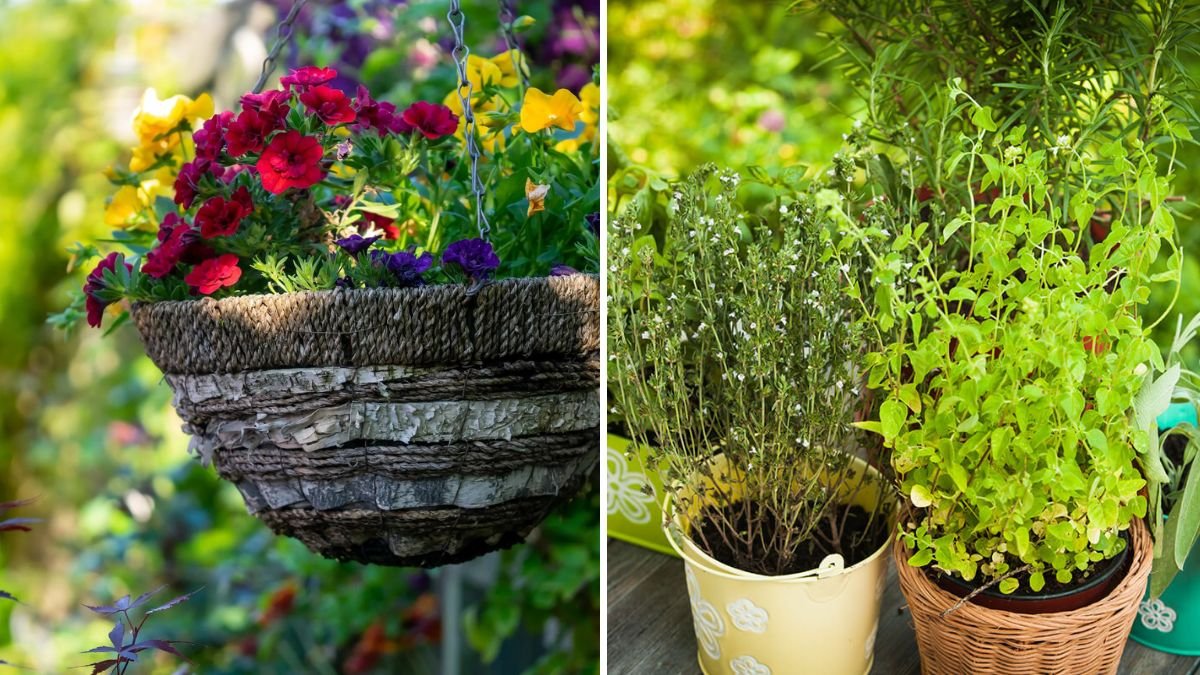Growing herbs in hanging baskets is a perfect solution for urban gardeners, balcony dwellers, or anyone with limited space. Hanging baskets not only maximize vertical space but also create an aesthetically pleasing display, offering fresh herbs within arm’s reach for cooking, teas, or natural remedies. When managed properly, herbs in hanging baskets can thrive, produce abundant foliage, and even add fragrance and visual appeal to your indoor or outdoor space.
This article provides a comprehensive guide on how to grow herbs in hanging baskets, including herb selection, container choice, soil, sunlight, watering, fertilization, pruning, and care strategies for a lush and productive herb garden.
1. Benefits of Growing Herbs in Hanging Baskets
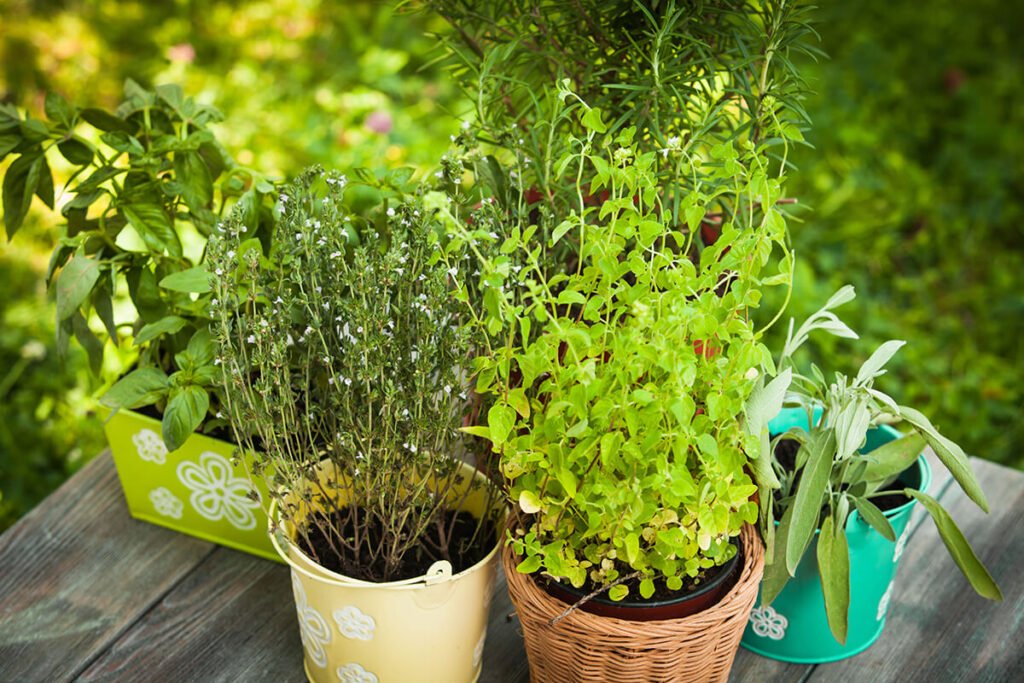
Growing herbs in hanging baskets offers several advantages:
- Space Efficiency: Ideal for small apartments, balconies, patios, or indoor spaces where ground space is limited.
- Aesthetic Appeal: Adds greenery and texture at eye level, enhancing décor.
- Improved Air Circulation: Hanging baskets reduce the risk of fungal infections by improving airflow.
- Ease of Access: Herbs are easily reachable for harvesting, pruning, or watering.
- Sunlight Optimization: Baskets can be relocated to capture optimal sunlight throughout the day.
These benefits make hanging baskets a practical and visually attractive option for herb cultivation.
2. Selecting the Right Herbs for Hanging Baskets
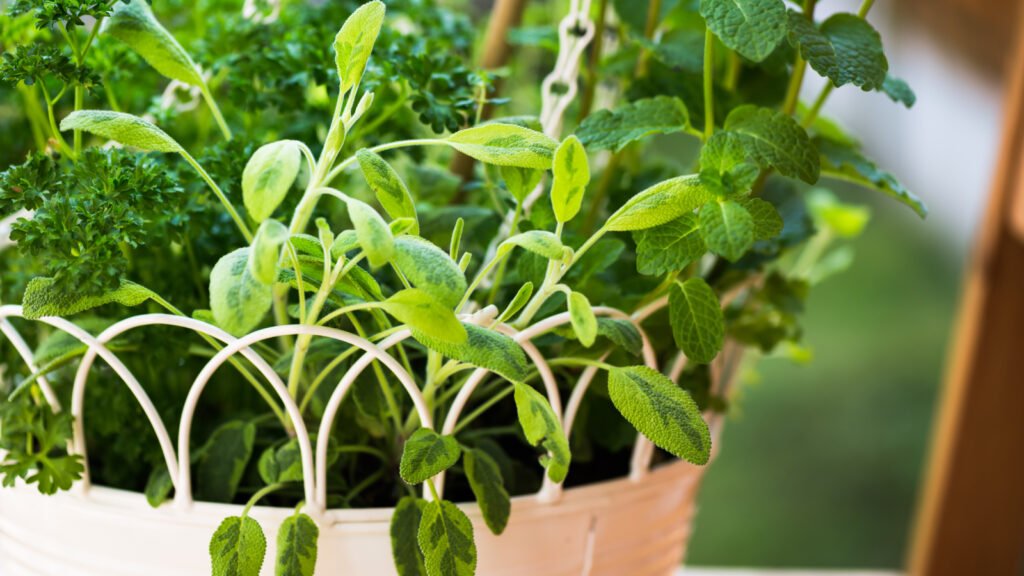
Not all herbs are suitable for hanging baskets. Ideal herbs should be:
- Compact or Trailing: Herbs that grow well without extensive root systems and can cascade attractively.
- Fast-Growing: Provide frequent harvests for cooking or decoration.
- Adaptable: Tolerate container conditions and variable moisture.
Some excellent choices include:
- Basil: Thrives in sunlight, grows rapidly, and adds fragrance and flavor.
- Thyme: Low-growing, trailing, and drought-tolerant.
- Oregano: Hardy and spreads beautifully, perfect for cascading baskets.
- Mint: Vigorous grower, but control its spread using individual baskets.
- Parsley: Upright growth, ideal for mid-level positions in hanging arrangements.
- Creeping Rosemary: Trailing variety that adds structure and fragrance.
- Chives: Compact, grass-like foliage, suitable for smaller baskets.
Combining trailing, upright, and bushy herbs creates dimension, fullness, and visual interest in hanging baskets.
3. Choosing the Right Hanging Basket
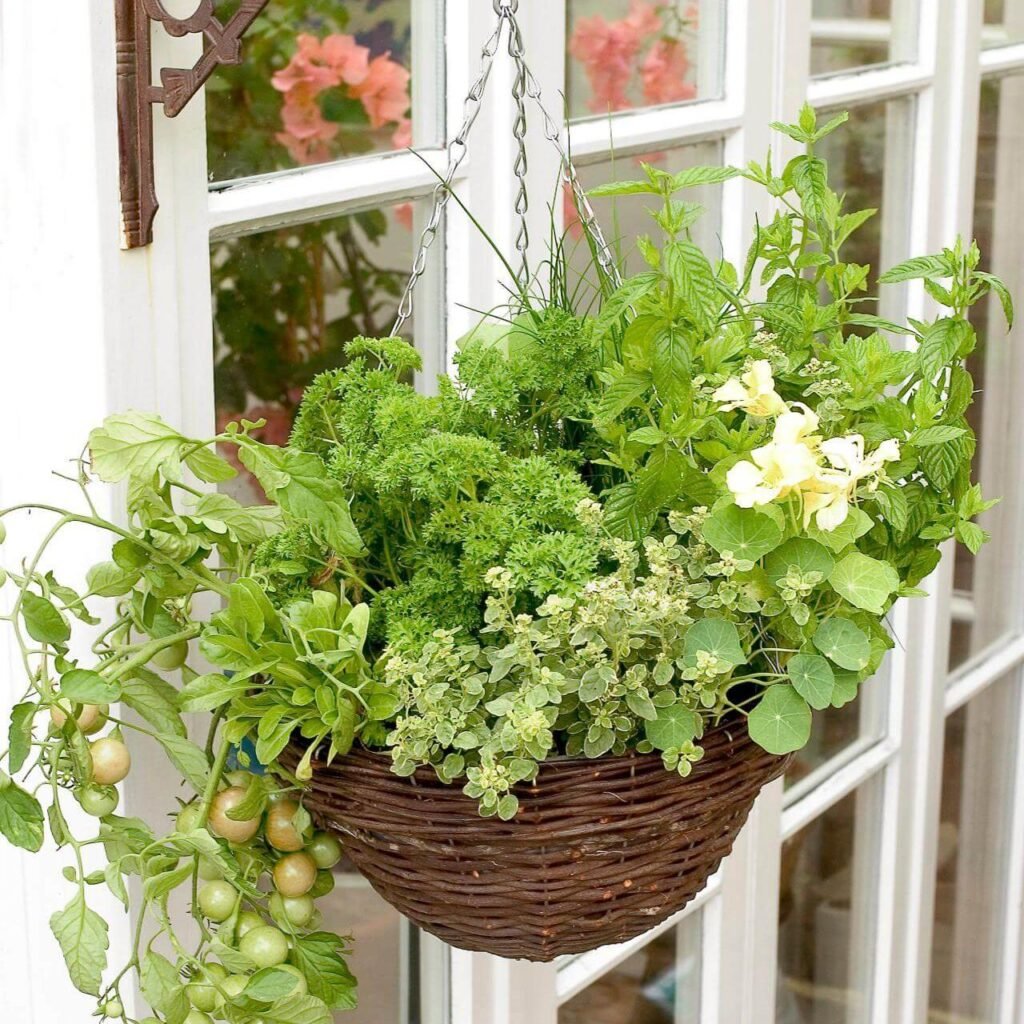
The right basket ensures herb health and ease of maintenance:
- Material: Plastic, metal, wicker, or coco liners. Plastic retains moisture, while coco liners provide breathability but dry faster.
- Size: Small baskets (8–10 inches diameter) for compact herbs; medium or large baskets (12–16 inches) for mixed plantings.
- Drainage: Essential to prevent root rot; ensure baskets have holes or liners that allow excess water to escape.
- Hanging Mechanism: Use sturdy chains, ropes, or hooks rated for the basket’s weight, considering wet soil can be heavy.
A well-chosen basket supports healthy growth, prevents waterlogging, and enhances the overall display.
4. Soil Requirements
Herbs in hanging baskets need lightweight, nutrient-rich soil:
- Well-Draining Mix: Combine potting soil with perlite, vermiculite, or coarse sand to prevent waterlogging.
- Moisture Retention: Add coconut coir, peat moss, or compost to retain moisture without making the soil soggy.
- Fertilization Support: Mix slow-release granular fertilizer or organic compost into the soil before planting.
- pH Level: Most herbs prefer slightly acidic to neutral soil (pH 6.0–7.0).
Using the right soil ensures herbs grow vigorously and maintain robust flavor and fragrance.
5. Sunlight Requirements
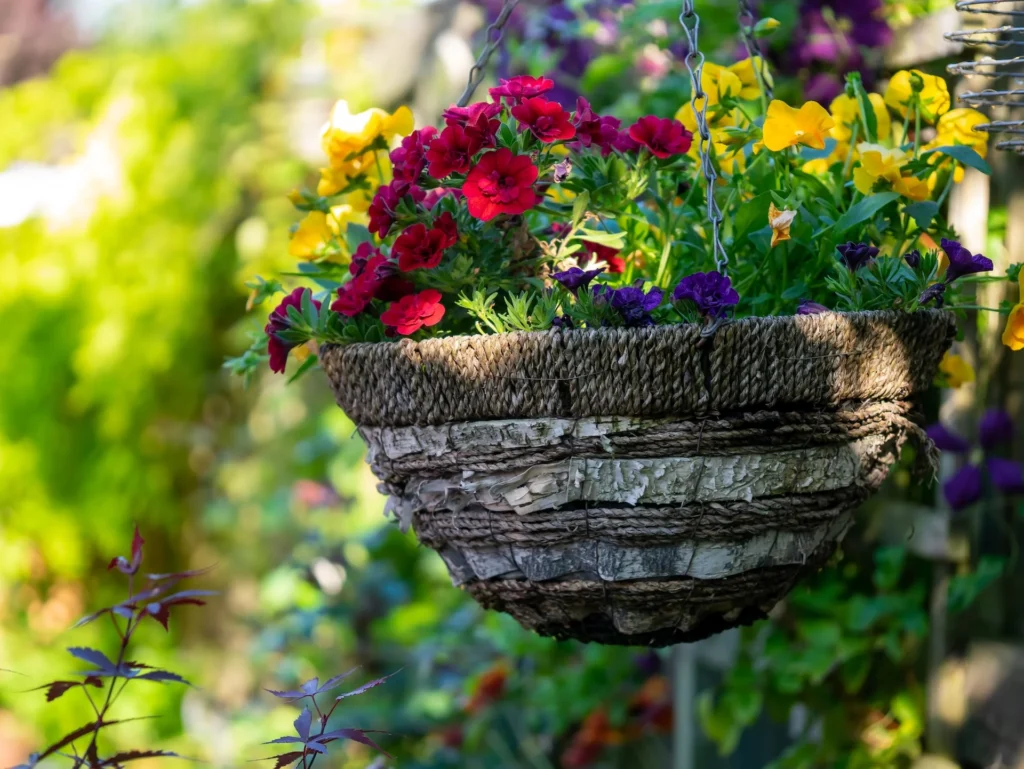
Sunlight is crucial for the growth and flavor of herbs:
- Full Sun Herbs: Basil, oregano, rosemary, and thyme require at least 6–8 hours of sunlight daily.
- Partial Shade Herbs: Parsley, mint, and chives tolerate 3–5 hours of sunlight.
- Indoor Placement: Position baskets near south-facing windows or under grow lights to supplement sunlight.
- Rotation: Rotate hanging baskets occasionally to ensure all sides receive adequate light.
Proper light exposure encourages dense foliage, strong stems, and enhanced aromatic oils, making herbs more flavorful.
6. Watering Techniques
Hanging baskets dry out faster than ground containers, so watering is critical:
- Check Soil Moisture: Insert your finger 1–2 inches into the soil. Water when the top layer is dry.
- Deep Watering: Water thoroughly until it drains from the bottom to ensure the entire root system receives moisture.
- Avoid Overwatering: Excess water can cause root rot, yellow leaves, and fungal problems.
- Mulching: Small amounts of mulch (e.g., bark or stones) help reduce moisture loss.
Consistent watering ensures healthy, vigorous growth, especially during hot or windy periods.
7. Fertilization for Hanging Herbs
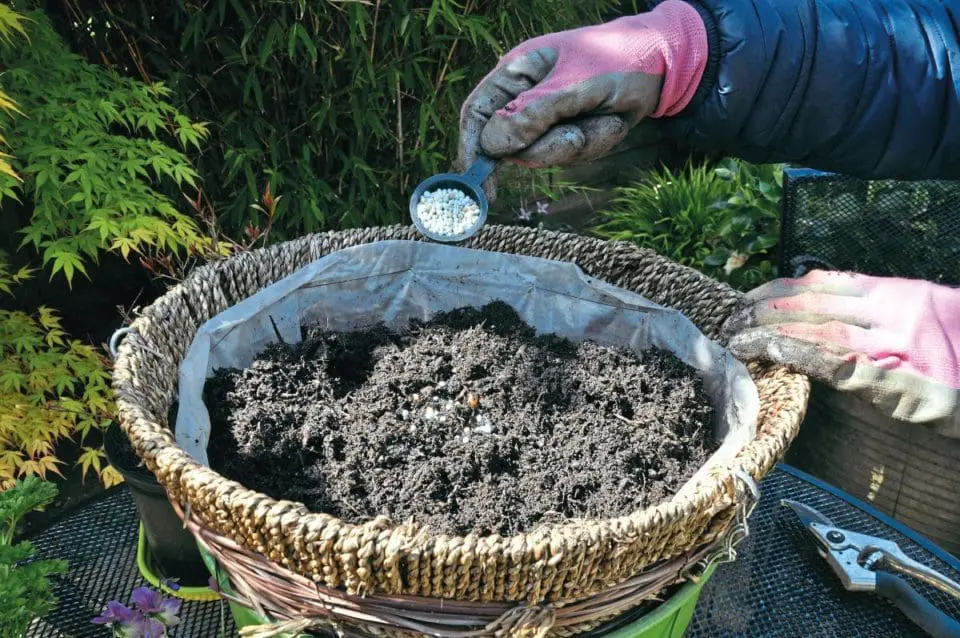
Herbs in hanging baskets rely on contained soil for nutrients:
- Slow-Release Fertilizers: Mix into soil during planting for long-term nutrient availability.
- Liquid Fertilizers: Feed herbs every 2–3 weeks during the growing season for continuous growth.
- Organic Options: Compost tea or fish emulsion can enrich soil naturally.
- Avoid Excess Nitrogen: Over-fertilization may promote foliage growth at the expense of flavor or flowering.
Proper fertilization supports lush foliage and consistent harvesting throughout the season.
8. Pruning and Harvesting
Pruning is essential for compact growth and continuous production:
- Regular Harvesting: Pinch or cut leaves regularly to encourage new growth and prevent flowering.
- Deadheading: Remove spent flowers on herbs like basil and oregano to maintain leaf production.
- Trimming: Shape trailing herbs like creeping rosemary or mint to maintain an attractive cascade.
- Encouraging Bushiness: Frequent light pruning encourages fuller, denser plants rather than leggy growth.
Strategic pruning ensures maximum yield, improved flavor, and an appealing aesthetic.
9. Pest and Disease Management
Hanging baskets have some advantages but are still susceptible to pests:
- Common Pests: Aphids, spider mites, whiteflies, and fungus gnats.
- Prevention: Maintain good airflow, avoid overcrowding, and inspect plants regularly.
- Organic Solutions: Neem oil, insecticidal soaps, or manual removal of pests.
- Fungal Diseases: Avoid wetting leaves and remove infected foliage promptly.
Early intervention and proper care ensure healthy herbs and minimal damage.
10. Creative Hanging Herb Arrangements
Designing visually appealing baskets enhances both form and function:
- Single Herb Basket: Focus on one herb for uniformity and ease of care.
- Mixed Herb Basket: Combine upright and trailing herbs for layered texture and visual interest.
- Thematic Grouping: Pair herbs with similar culinary uses (e.g., Italian herbs: basil, oregano, thyme) for practical appeal.
- Cascading Design: Place trailing herbs around the basket edges to create a lush, overflowing effect.
- Seasonal Rotation: Replace herbs that are done for the season to maintain fresh, productive baskets.
Creative arrangements make hanging baskets both decorative and functional, providing a continuous supply of herbs.
11. Seasonal Considerations
Herbs in hanging baskets require adaptation throughout the year:
- Spring/Summer: Ideal growing season for most herbs; ensure full sunlight and consistent watering.
- Fall/Winter: Protect sensitive herbs indoors or in a greenhouse; reduce watering as growth slows.
- Rotation: Refresh baskets with seasonal herbs to maintain productivity and aesthetics.
- Indoor Care: Use grow lights and maintain humidity for indoor winter herbs.
Seasonal planning ensures year-round greenery and herb availability, even in small spaces.
12. Benefits of Growing Herbs in Hanging Baskets
- Space Maximization: Ideal for balconies, windowsills, or patios.
- Aesthetic Appeal: Adds vertical greenery and decorative interest.
- Accessibility: Harvest fresh herbs directly from eye-level baskets.
- Flavor and Aroma: Fresh, homegrown herbs enhance culinary creations.
- Health and Wellness: Encourages outdoor activity, reduces stress, and improves air quality.
- Mobility: Baskets can be relocated to optimize sunlight or protect from weather.
Hanging baskets combine practicality, productivity, and visual charm, making them a valuable addition to any garden space.
Conclusion
Growing herbs in hanging baskets is an efficient, aesthetically pleasing, and rewarding method for urban gardeners or anyone with limited space. By carefully selecting suitable herbs, choosing the right baskets, using well-draining soil, and ensuring proper sunlight, watering, and fertilization, you can enjoy a thriving, lush herb garden year-round.
Pruning, regular harvesting, pest management, and creative arrangements enhance both productivity and beauty. Trailing herbs create lush cascades, upright herbs add structure, and mixed plantings offer a rich sensory experience of colors, textures, and fragrances.
A well-designed hanging herb garden is more than just a collection of plants—it’s a practical, aromatic, and visually stunning space that elevates urban living. With attention to detail and consistent care, even a small balcony, terrace, or indoor corner can transform into a green haven full of flavor, fragrance, and lush greenery.
